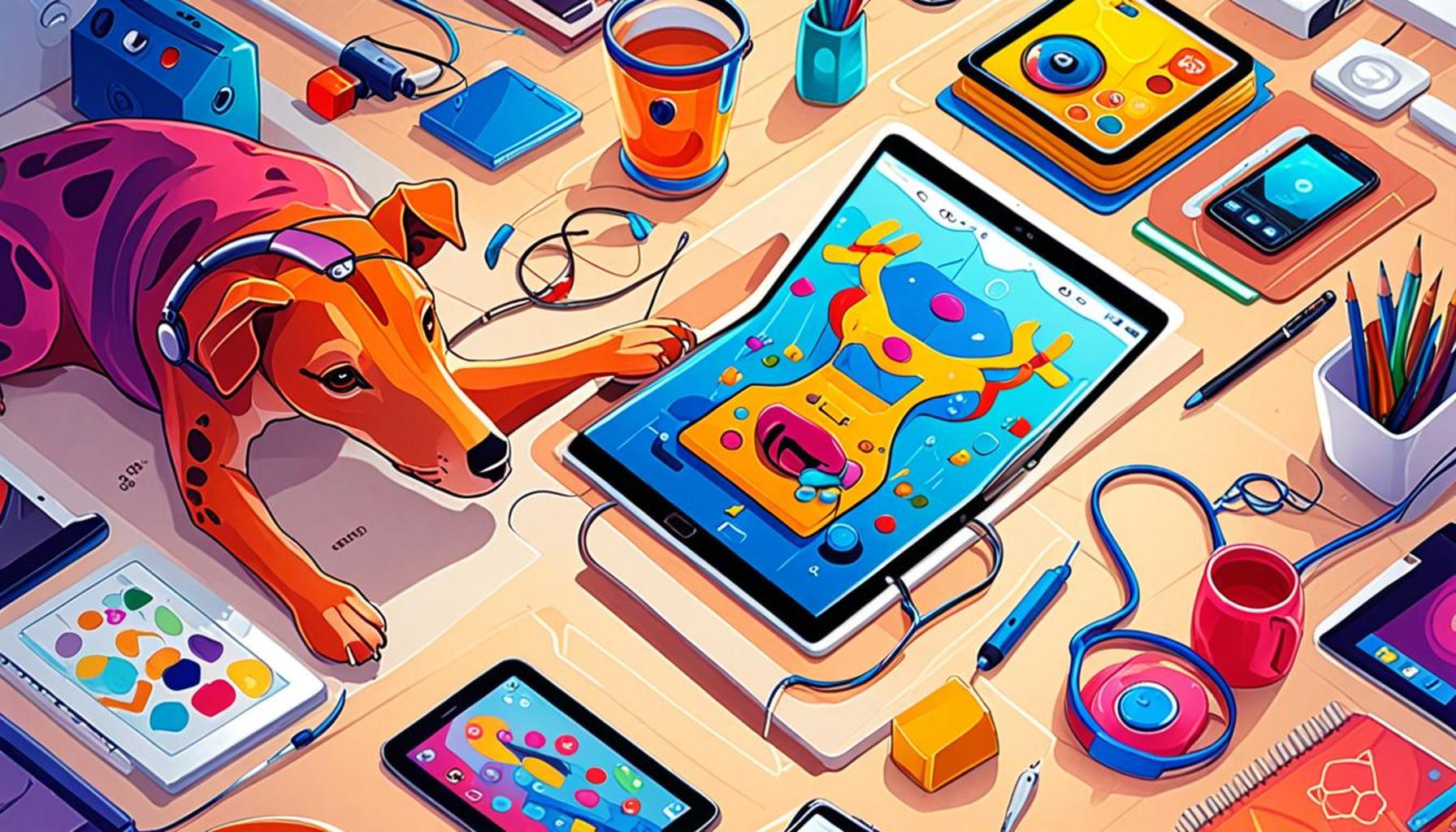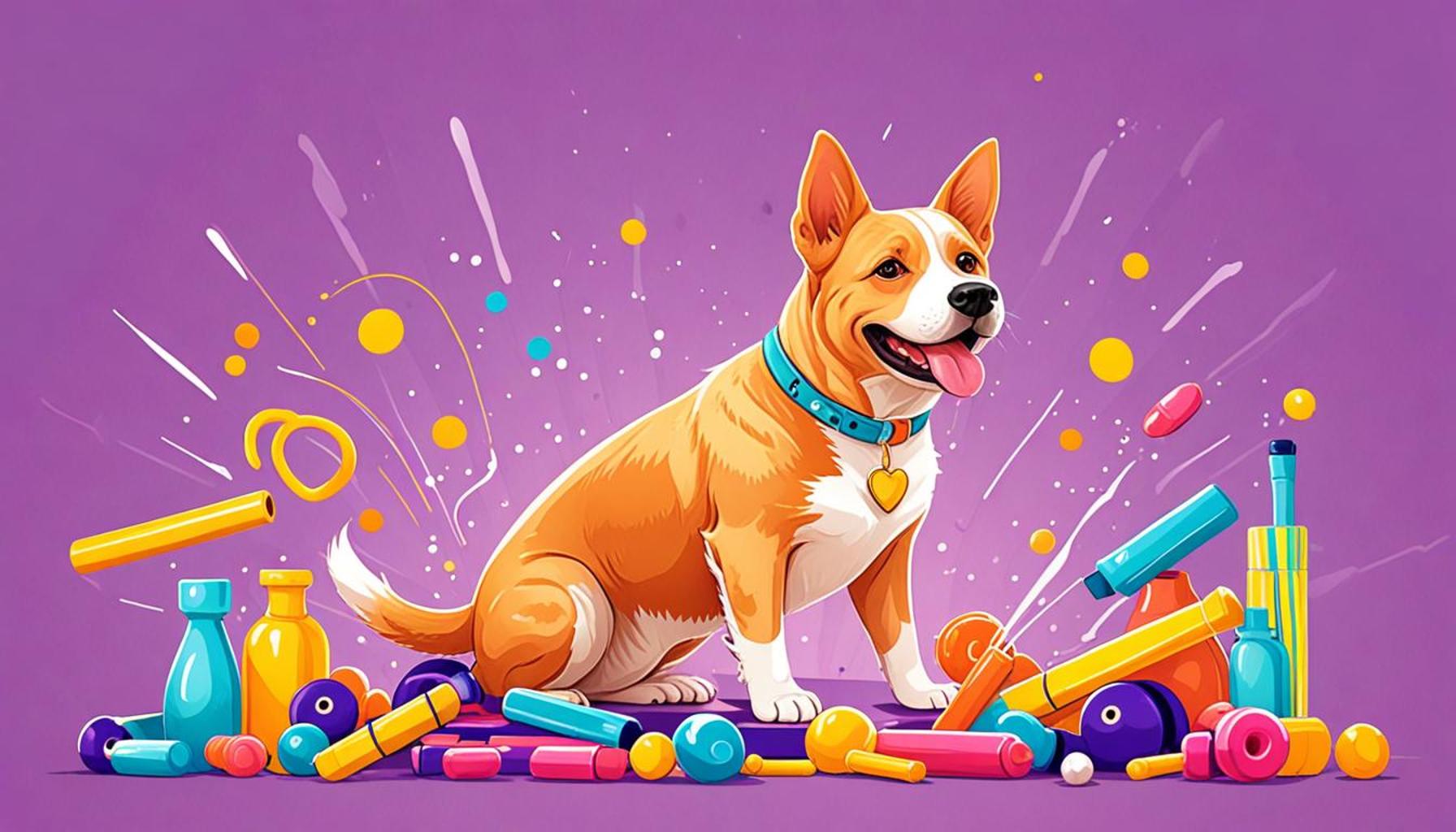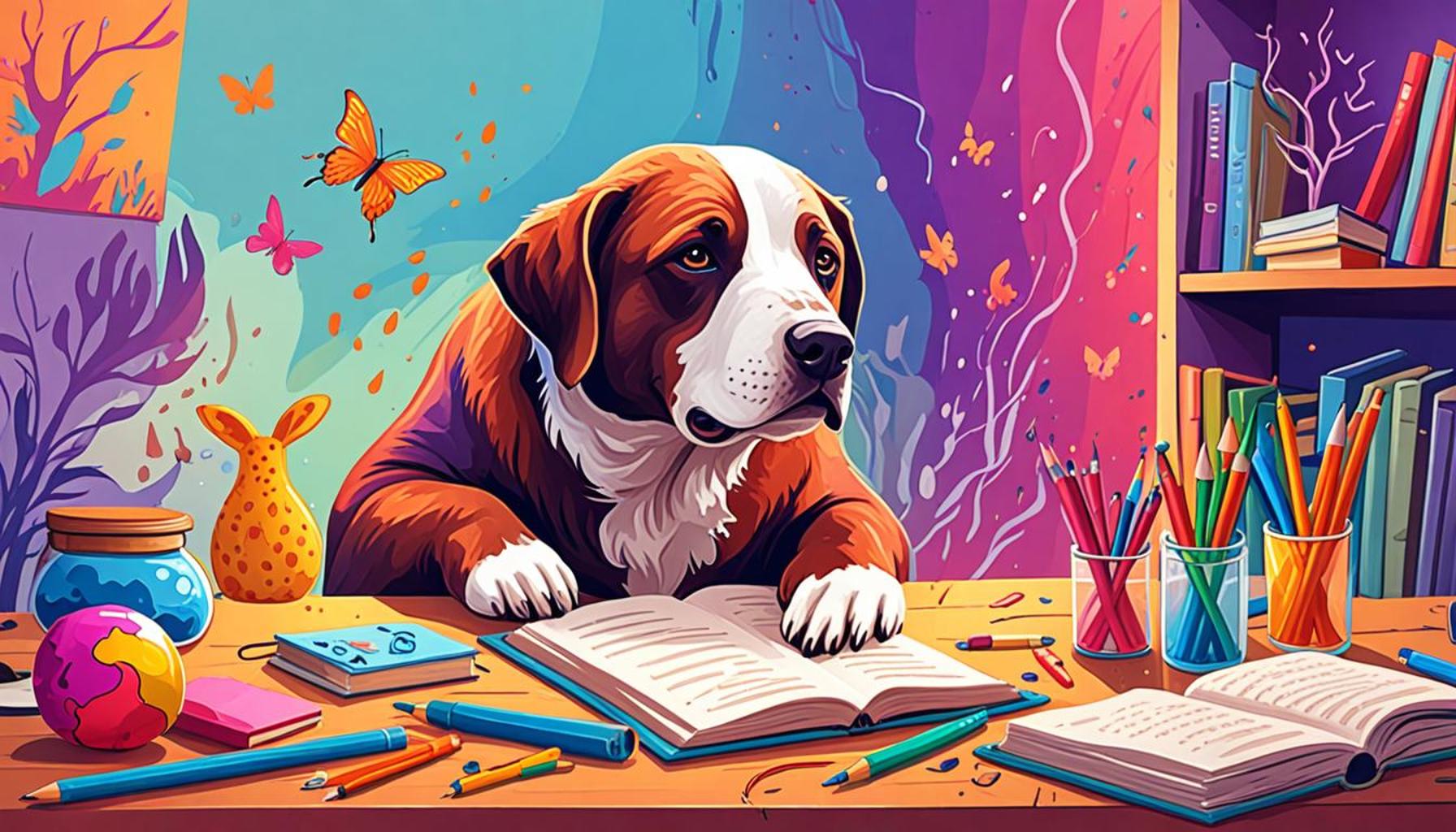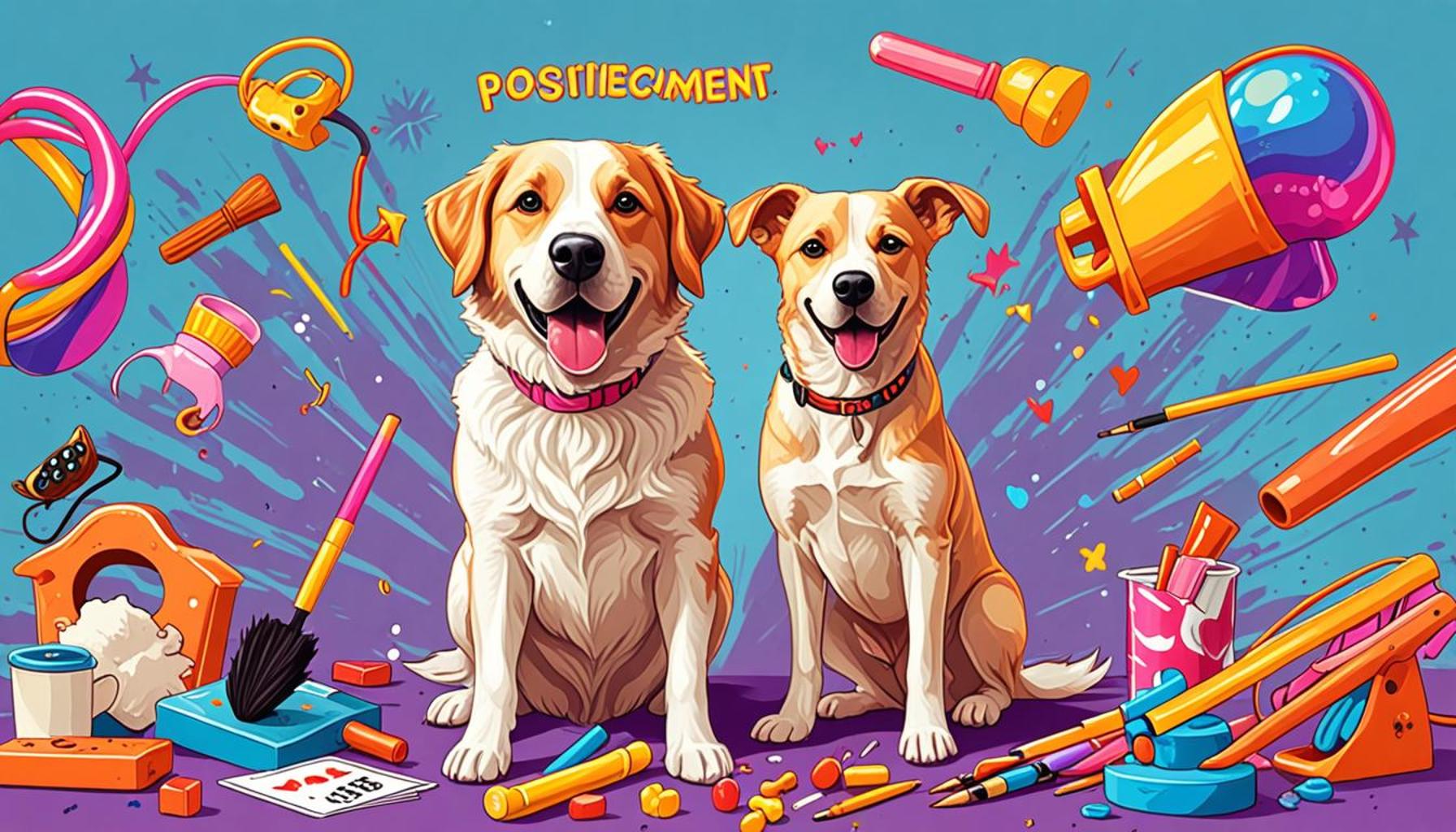Use of Technology in Animal Training: Apps and Gadgets that Facilitate the Process

Leveraging Innovation for Better Animal Training
In the age of technology, even animal training is experiencing a revolutionary shift. Pet owners and trainers are increasingly turning to apps and gadgets designed to enhance the training process. These tools not only make training more efficient but also more engaging for both animals and their handlers.
Innovations in technology are lending a helping paw, so to speak, in improving various aspects of animal training. With the rise of the digital age, it is not just traditional methods that prevail; an amalgamation of science and practical tools is reshaping how we approach animal behavior. The following are key technological advancements making a significant impact:
- Mobile Apps: Applications like “Dogo” and “Pupford” are at the forefront of this new age, offering an array of training tutorials that range from basic commands to complex tricks. These apps often include tracking features that allow owners to monitor their pet’s progress over time. Community support forums are also a valuable feature, enabling users to share experiences and training tips, thus fostering a supportive network for pet parents. For instance, Dogo incorporates a “photo challenge” element where users can submit videos of their pets completing tasks, receiving feedback and encouragement from fellowpet enthusiasts.
- Wearable Devices: Smart collars have emerged as a cutting-edge tool for pet owners. These gadgets not only track activity levels but also behavioral patterns. For example, smart collars equipped with sensors can detect barking, which allows owners to interpret their dog’s emotional state. Insights garnered from such devices can guide owners in real-time to adjust training methods or even address underlying health conditions.
- Electronic Training Aids: Devices such as clickers and remote trainers have long been staples in the training world. In the modern context, they are becoming more sophisticated, incorporating technology that allows for precise timing and adjustable settings. These tools can reinforce positive behavior effectively by providing immediate feedback, making them extremely useful in teaching commands or correcting unwanted behaviors.
These innovations not only simplify various aspects of training but also facilitate a deeper understanding of animal behavior, thereby making training sessions notably more effective. Imagine being able to analyze your dog’s activity levels to determine the ideal time for a training session; technology makes that possible.
Embracing these technological advancements doesn’t just streamline training, but also enhances the bond between pets and their owners. By addressing the individual needs of each animal with tailored methodologies, both parties benefit from a more enjoyable and constructive experience.
As we delve deeper into this digital transformation, it becomes evident that technology is bridging the gap between traditional methods and modern training practices. Whether you’re a professional trainer or a pet parent, exploring these advancements could open up new pathways to success and improve your bond with your furry companions. As a society embracing innovation, the potential for enhanced communication and understanding with our animals has never been more promising.
LEARN MORE: Click here for essential tips on preventing common pet diseases
Innovative Tools Transforming Animal Training
The adoption of technology in animal training is not merely a trend; it represents a fundamental shift in how we understand and communicate with our pets. With an influx of apps and gadgets available at our fingertips, pet owners now have unprecedented access to resources that enhance their training efforts. The integration of these advanced tools is fostering a more productive and enriching environment for both animals and trainers.
Mobile applications play a pivotal role in this modern shift. For example, apps such as “Pawtastic” and “TrainAway” are gaining traction for their user-friendly interfaces and innovative training solutions. These platforms not only provide personalized training plans, but also allow pet owners to incorporate interactive features that encourage active participation. Video tutorials featuring professional trainers offer valuable visual aids, breaking down complex behaviors into manageable steps.
- Community Engagement: Many training apps include community features that connect pet owners with each other. This networking aspect creates an invaluable support system. Users can share their challenges and celebrate successes, while providing tips that cater to unique dog training issues. Being part of a community can significantly increase a pet owner’s motivation.
- Progress Tracking: Tracking features enable owners to log training sessions, behavioral progress, and even moments of improvement. For instance, apps like “Pupford” allow users to set goals and track milestones, providing a visual representation of a pet’s development. This, in turn, builds a sense of accomplishment for both the pet and its owner.
- Targeted Feedback: Innovations such as video feedback options allow trainers to upload videos of their pets performing tasks. This feature enables professional trainers to provide targeted feedback, which can be especially helpful for addressing specific training issues that may arise.
Another game-changer in this realm is the emergence of wearable technology for pets. Smart collars are revolutionizing how we monitor our furry friends. Equipped with GPS trackers, heart rate monitors, and activity sensors, these devices provide a wealth of data that can inform training strategies. For instance, understanding a dog’s activity levels throughout the day can help identify optimal times for training, enhancing the effectiveness of each session.
Moreover, advancements in electronic training aids take traditional methods to new heights. Devices like treat dispensers activated by a smartphone app can reinforce positive behavior, allowing for instant rewards. This immediate feedback loop is critical in shaping desired responses in animals effectively. By embracing these innovative tools, trainers can address behavioral challenges with precision, ensuring that both animals and owners remain engaged and motivated throughout the training process.
Through the lens of technology, animal training has transformed into a more dynamic and interactive experience. Pet owners are now equipped with the means to tailor their training approaches while forging stronger bonds with their pets. With each passing day, it becomes increasingly evident that technology will continue to play an integral role in the evolution of animal training practices.
| Category | Details |
|---|---|
| Training Apps | Convenience and Accessibility make learning techniques readily available, allowing dog owners to train at their own pace. |
| Wearable Gadgets | Real-time Data monitoring helps track animal behavior and health metrics, enabling personalized training regimens. |
| Virtual Trainers | Guided Sessions offer interactive experiences directly from experts, ensuring proper training techniques. |
The evolution of technology in animal training is remarkable, but the true benefit lies in how connectivity and access have transformed traditional methods. With the rise of mobile training applications, users can now learn at their own pace, making it easier to incorporate positive reinforcement techniques into their routine. Wearables, such as smart collars, deliver unmatched insights into an animal’s behavior, allowing owners to adjust their training strategies to meet specific needs. This data-driven approach not only enhances the training experience but also builds a deeper bond between trainers and their pets.Additionally, virtual training services bridge the gap between pet owners and professionals, offering seamless access to expert advice and tailored suggestions from the comfort of home. As these technologies advance, they pave the way for a new era in pet training, where efficiency and strong communication reign supreme. From tracking advancements in animal behavior to ensuring health through continuous monitoring, it is evident that technology is invaluable to modern animal training practices.
LEARN MORE: Click here for essential tips on pet vaccinations
Enhancing Training Efficacy with Smart Gadgets
The technological landscape of animal training extends far beyond mobile applications, encompassing a variety of smart gadgets designed to tailor training practices. Among these innovations, interactive toys have become increasingly popular, providing both mental stimulation and physical exercise. Devices like the “PetCube” and “Nina Ottosson” series offer engaging puzzles that challenge pets to think and strategize, encouraging problem-solving while providing valuable rewards. These gadgets not only entertain but also help in reinforcing good behavior through positive association with play.
Additionally, the adoption of virtual reality (VR) training is an emerging frontier in the field of animal training. Some trainers are exploring VR environments to simulate real-world scenarios for dogs, allowing them to practice obedience in various settings, from bustling streets to quiet parks. This immersive technology is helping pets acclimatize to different environments, reducing anxiety and bolstering confidence. Such tools are particularly helpful for service and therapy dogs in training, who may face myriad distractions in their line of work.
- Feedback Mechanisms: Integrating responsive feedback systems within gadgets ensures that pets receive instant reinforcement. For instance, advanced treat dispensers can be synced with apps to release treats when specific commands are performed. This not only motivates pets but also allows owners to seamlessly monitor their pet’s learning curve.
- Remote Interaction: Another innovation gaining traction is the development of smart cameras equipped with interactive elements to facilitate remote training sessions. Products like “Furbo” allow owners to watch their pets in real-time, engaging them with voice commands or even tossing treats from afar. This is particularly beneficial for busy pet owners who may not be physically present during training sessions.
- Gamified Learning: Many gadgets leverage gamification to make the learning process more enjoyable. Devices like “GoBone” incorporate a smartphone-controlled toy that keeps pets entertained by moving and responding to commands, ensuring they remain engaged in training activities. The inclusion of game mechanics fosters a sense of achievement for pets, effectively increasing their willingness to participate and learn.
Moreover, the convergence of artificial intelligence (AI) within training tools bears considerable potential. AI-driven trainers analyze a pet’s behavior during training sessions and offer tailored advice, responding to each unique response from the animal. Devices like “CleverPet” utilize AI algorithms to adapt exercises to ensure optimal engagement and skill mastery, creating a customized training pathway for each individual pet.
As the understanding of behavioral cues deepens, the reliance on these cutting-edge tools can significantly improve the effectiveness of training strategies. Trainers are encouraged to remain open to these advancements, as the unique applications of technology can address various challenges encountered during traditional training methods.
The rapid integration of technology into animal training processes heralds an era of innovation and efficiency. With these smart gadgets and interactive applications now available, trainers and pet owners alike are empowered to customize their training approaches, paving the way for a deeper understanding and enrichment of the human-animal bond.
DON’T MISS: Click here to learn how to prepare your home for a new pet
Conclusion: The Future of Animal Training through Technology
As the realm of animal training continues to evolve, the integration of technology plays a pivotal role in enhancing training efficacy and enriching the lifestyles of both pets and their owners. From interactive toys and smart gadgets to the innovative use of virtual reality and artificial intelligence, the options available today allow for personalized, engaging, and effective training methodologies. These advancements not only address the unique challenges faced in traditional training but also foster a deeper bond between humans and animals.
The possibilities presented by mobile applications and connected devices extend far beyond mere convenience; they empower owners to track progress, tailor training sessions, and enhance pet wellbeing. With tools such as smart cameras and gamified learning solutions, training can be transformed into an enjoyable and highly interactive experience, making learning a natural part of daily life for pets.
Looking forward, it is essential for trainers and pet owners to embrace these technological innovations. By doing so, they can not only improve their training techniques but also create a more enjoyable, supportive environment for their pets. This partnership between technology and animal training opens new avenues for understanding and support, ultimately leading to happier and more well-adjusted pets. As the landscape continues to shift, those willing to explore these new tools will undoubtedly find immense benefits in their training endeavors, paving the way for a smarter future in animal training.


